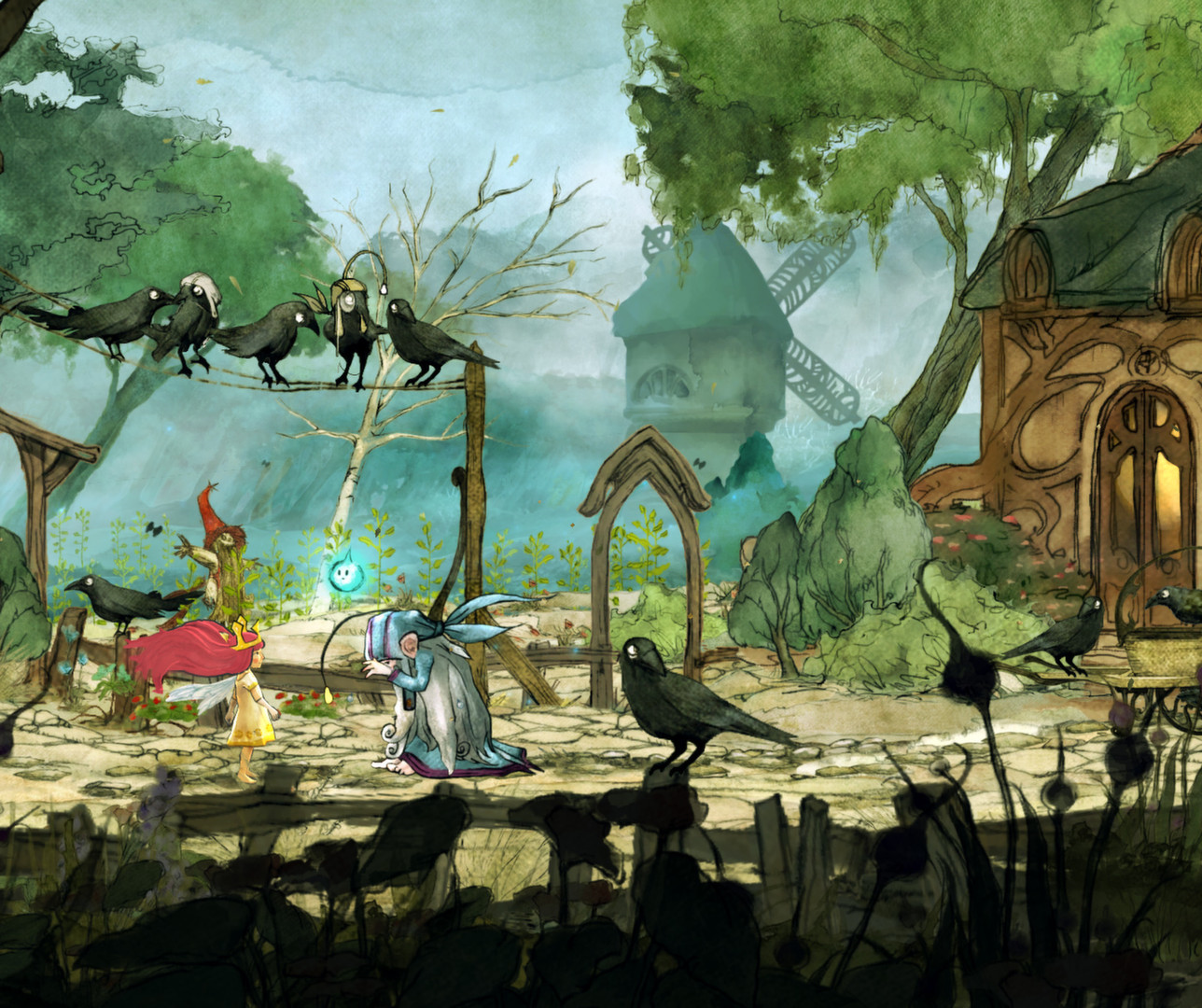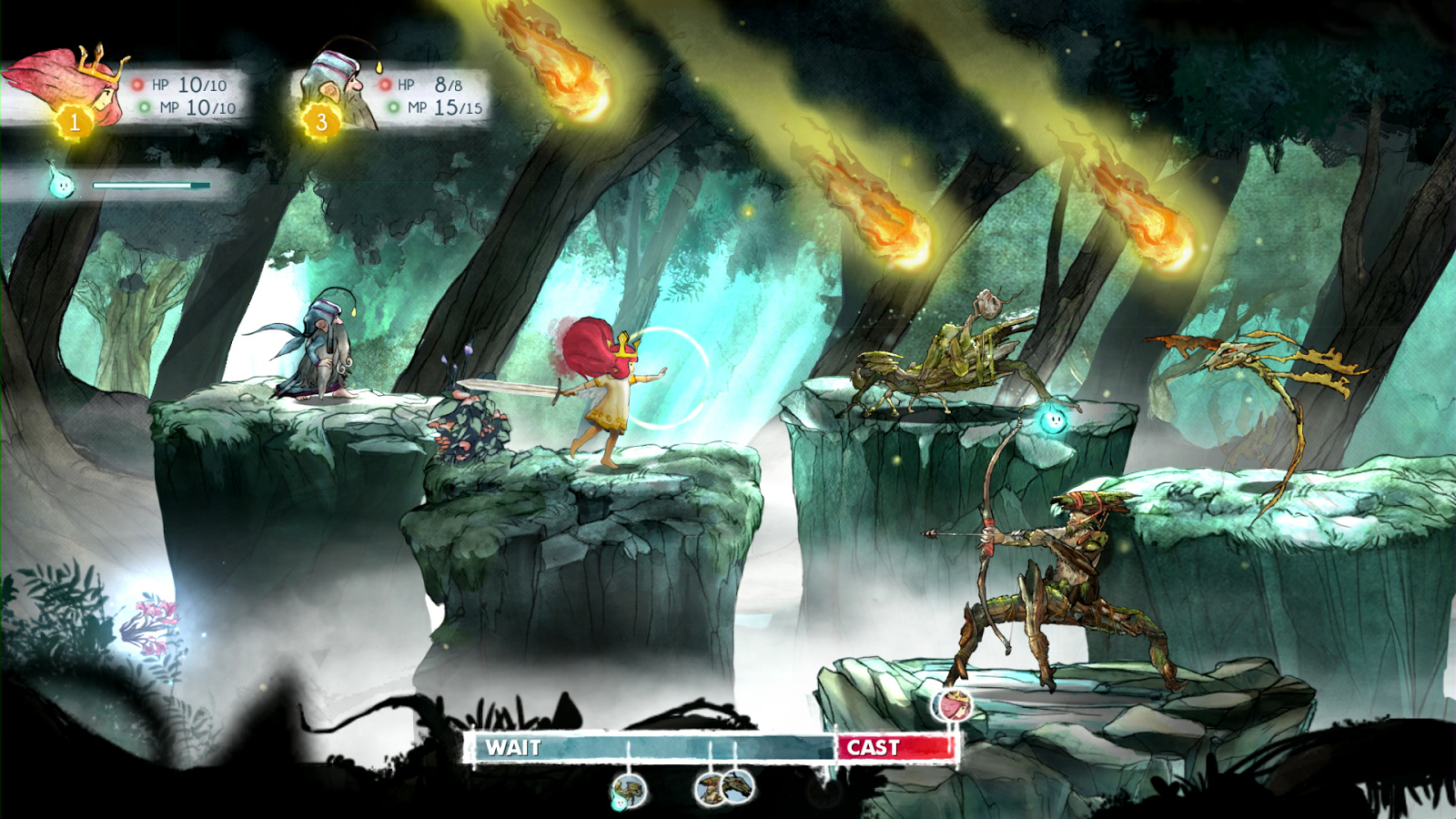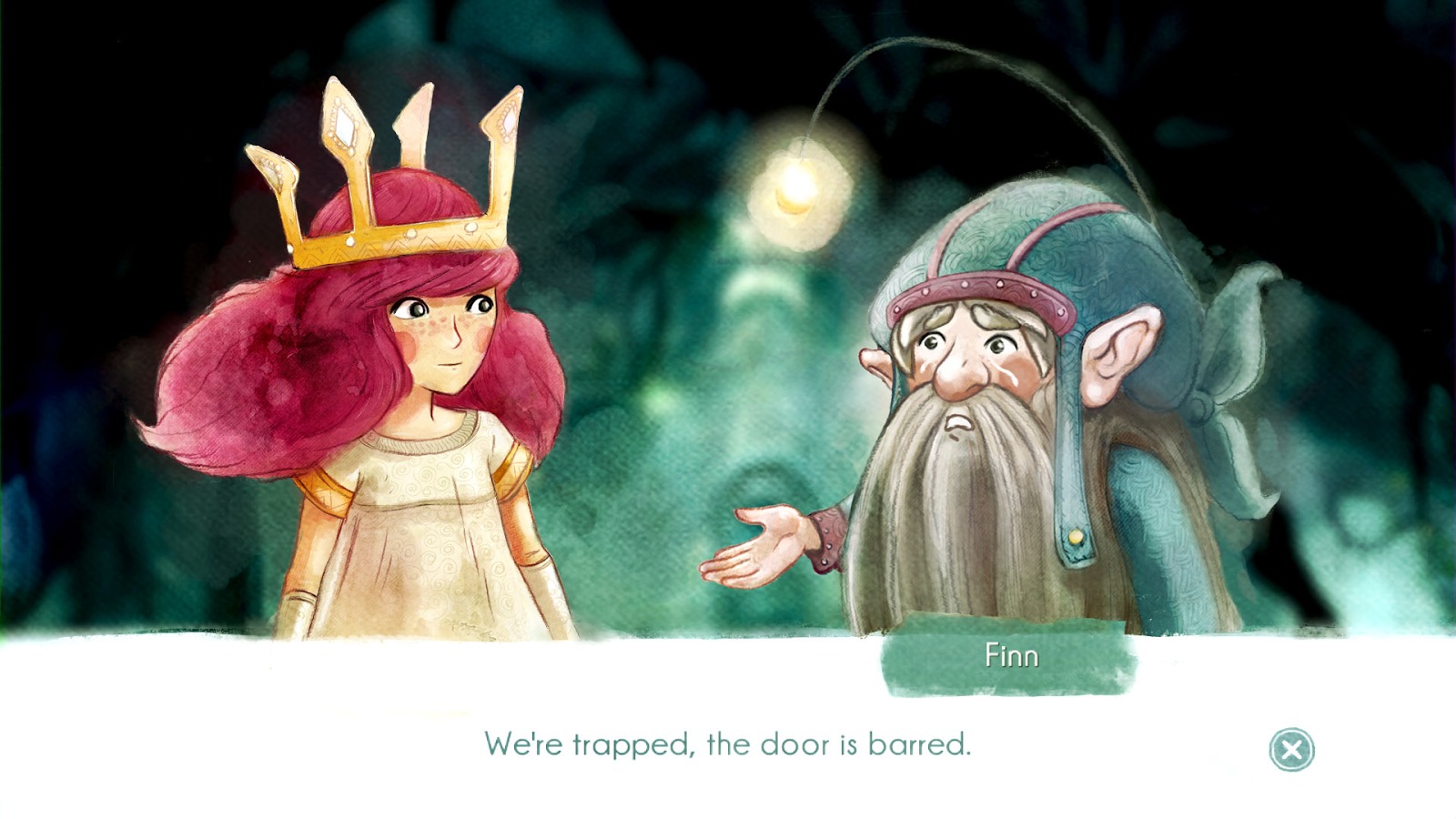 Review by Nick H.
Review by Nick H.
For months now Ubisoft has been teasing screenshots for Child of Light. Then the trailers come out and people could hear soft, lovely music and could see that in motion Child of Light was every bit as impressive as the still images indicated. The real question then, was whether or not the entirety of Child of Light would be as impressive. In short the answer is yes, Child of Light not only met but exceeded my expectations – and I had quite a few lofty ones for it.
If Child of Light was just a pretty face, there would be very little reason to spend so much time with it. Like the fairytale stories Child of Light is based on, Ubisoft Montreal deserves credit for taking chances and really using the imagination of its developers.
The visuals for Child of Light have received the bulk of the attention over the last few months, but the audio presentation also deserves credit. The musical score is enchanting, the voice work is quite good and the sound effects are excellent. Subtle details from the environment play through the audio, making the visually lush world feel even more alive. The writing for the spoken dialogue can be a little cheesy at times as the narrative is presented through rhyming verse, but that is through no fault of the actors themselves. Aurora in particular deserves credit for actually playing the role of a child. This is not a small quest she is on, and yet she often acts like a child in that she wants simpler things and is not always fully aware of the grand scheme of things or her significant role in the proceedings. It’s charming characterisation, to say the least.
The puzzles and platforming elements make the world an interactive experience that is interesting, though perhaps somewhat light on challenge. In fact one of the few complaints that can be made is that Child of Light is a relatively easy game on its default difficulty. There is a hard mode however, that does not impact the puzzles, but makes combat more challenging.
Igniculus, a wisp that accompanies Aurora on her journey, serves as a sort of puzzle-solving element or resource gatherer. Igniculus also serves as a co-op mechanic, allowing a second player to control him (as opposed to simply controlling him with one of the analogue sticks in single player). The role is not as prestigious as Aurora’s, but it is still fun to play with a friend or kid. I spent most of my time playing Child of Light single player, but gladly took on the mantle of Igniculus to help my youngest daughter during her time with the game.
The combat leads us into one of the two primary reasons Child of Light can be considered an RPG. Combat takes several elements found in other games and pulls them together into a surprisingly cohesive package. There is an action bar at the bottom, with both your team and your opponents represented on it via little icons. These icons move from left to right along the bar based on each character’s speed statistic. When they reach the end of the bar, they hit the ‘Cast’ phase, which is when the player gets to decide action the character will take. Some actions are completed more quickly than others. Defending is instant, whereas a standard attack may be quick and a powerful spell might take some time to prepare.
There is risk and reward in this system, because getting hit with an enemy attack while in that “cast” section of the time bar might cause a delay on the player character’s action. Each character has a handful of spells and skills they can draw from, and they are all quite unique from one another. Aurora primarily uses a sword to attack, while other members of the party might be both very quick and armed with healing magic, or a bit slower and wielding offensive spells. Combat is fast and seldom boring, due in large part to the need for strategy throughout. Creatures generally approach in teams of two or three, and your own party – while potentially quite large and diverse – only fields a couple of characters at a time.
Combat also uses elemental aspects seen in other games. Some elements do more damage or less against other elements. Early on enemies tend to be grouped together by element, but as you delve further into the game, the heroes will encounter groups of enemies that may be quite mixed in their elemental affinities.
Experience is earned after combat, and each character has a huge talent tree. Passive talents might raise strength or speed and active skills or spells can be learned as well. Each of the skill tables are quite large, but because you are earning experience quite rapidly throughout the game, you have ample opportunity to unlock new talents for each of your characters. There are no completely useless spells or skills and there is no single bad path to take while unlocking things.
There are a fair number of items to be found, ranging from healing and magic restoring potions to stones that can imbue a character with additional perks. This socketing system appears in plenty of games now, as does the ability to mix and match stones to create larger, more powerful variants. The same type of stone can do different things depending on where you apply it. Put it into a character’s weapon and you can add points of damage and an elemental attack. Put it to a different area and it may raise fire resistance or give more hit points.
One of my only other concerns about Child of Light is the pacing. Experience is earned so readily that I found myself simply letting experience levels build up so I could plug in several points of talent for my characters at a time. This runs very counter-intuitive to my natural desire to be as ‘maxed out’ as possible while playing. This applies to the items as well. Stopping to work on the next magic stone or to drop in your next point of talent every few minutes can make it tough to get into the flow of the game, which has a beautiful rhythm if you let it play out. As such, I got in the habit of going through my menus every fifteen to twenty minutes to handle these micromanaging tasks in bulk.
The Ubisoft Montreal team shows that by taking chances and letting their imaginations run wild, they can create a unique, beautiful experience that works on several levels. Aurora’s own journey is a similar one as she learns by trying new things and taking some chances as she grows along the way. It is hard not to see her path mirroring mirroring the studio’s as she steps into a new world full of possibilities. Child of Light is a fun adventure well worth exploring by yourself or with a friend.
– Nick H.
US Editor
Reach me by email at: nickh@digitallydownloaded.net










